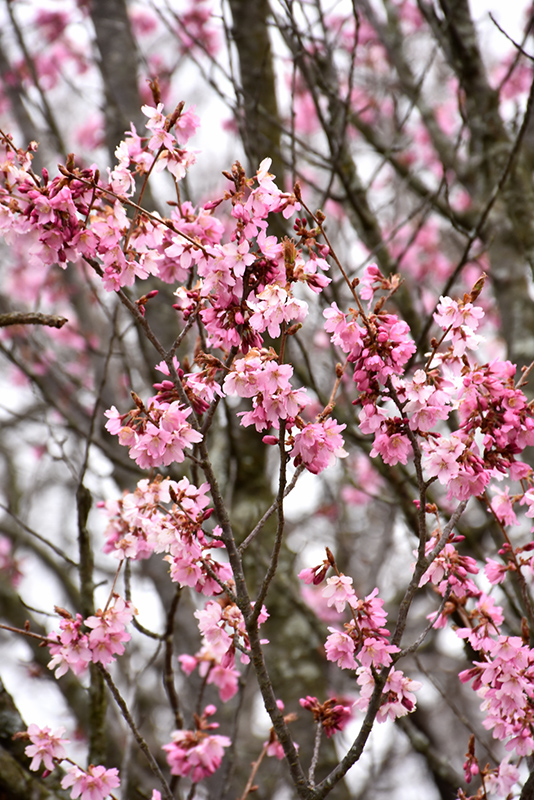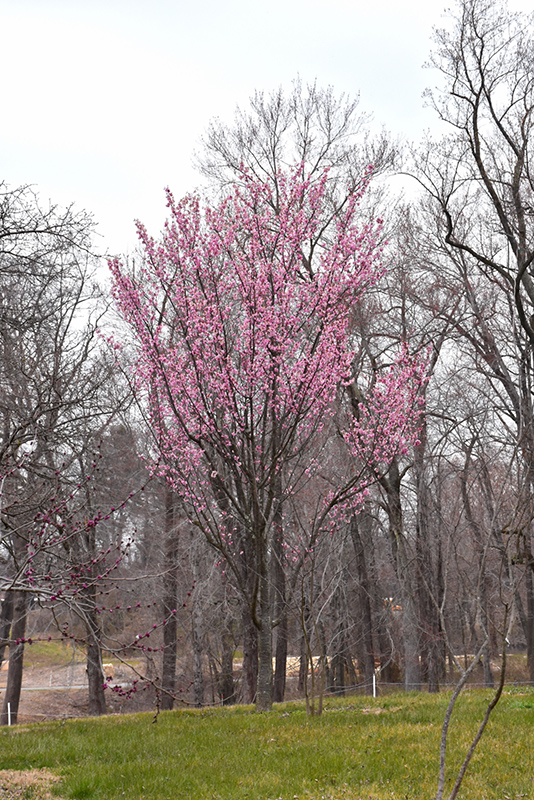Columnar Sargent Cherry
Prunus sargentii 'Columnaris'
Height: 30 feet
Spread: 15 feet
Sunlight:
![]()
Hardiness Zone: 5a
Description:
A hardy upright and narrow feature tree, with a stunning display of pink flowers in early spring before the leaves; ornamental glossy reddish-brown bark and good fall color, makes a great vertical accent or tall allee if planted in a row; needs full sun
Ornamental Features
Columnar Sargent Cherry is smothered in stunning clusters of fragrant pink flowers along the branches in early spring, which emerge from distinctive rose flower buds before the leaves. It has forest green deciduous foliage which emerges red in spring. The oval leaves turn an outstanding brick red in the fall. The fruits are showy black drupes displayed in mid summer. The smooth dark red bark adds an interesting dimension to the landscape.
Landscape Attributes
Columnar Sargent Cherry is a deciduous tree with a narrowly upright and columnar growth habit. Its average texture blends into the landscape, but can be balanced by one or two finer or coarser trees or shrubs for an effective composition.
This is a relatively low maintenance tree, and is best pruned in late winter once the threat of extreme cold has passed. It is a good choice for attracting birds to your yard. It has no significant negative characteristics.
Columnar Sargent Cherry is recommended for the following landscape applications;
- Accent
- Vertical Accent
Planting & Growing
Columnar Sargent Cherry will grow to be about 30 feet tall at maturity, with a spread of 15 feet. It has a low canopy with a typical clearance of 3 feet from the ground, and should not be planted underneath power lines. It grows at a medium rate, and under ideal conditions can be expected to live for 50 years or more.
This tree should only be grown in full sunlight. It does best in average to evenly moist conditions, but will not tolerate standing water. It is not particular as to soil type or pH. It is somewhat tolerant of urban pollution. This is a selected variety of a species not originally from North America.




